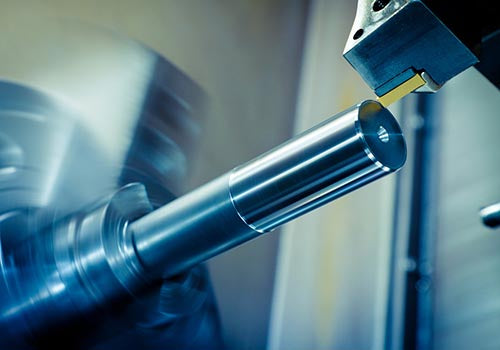
Expert Tips for Choosing and Using CNC ID & OD Turning Toolholders
Share
Introduction
CNC (Computer Numerical Control) turning is an important technique used in the manufacturing industry for producing high-precision components. The use of CNC ID & OD turning toolholders is essential for achieving accuracy and efficiency in the process. In this blog post, we will discuss expert tips for choosing and using CNC ID & OD turning toolholders.
Choosing the Right Toolholder
The first step in achieving precision turning is to choose the right toolholder. There are various types of toolholders available in the market, and choosing the right one can make a significant difference in the quality of the final product.
Material
Choose a toolholder made from high-quality material that can withstand high cutting forces and provide long tool life. The material used for toolholder manufacturing must be durable, wear-resistant, and able to withstand high-speed machining. Steel, carbide, and ceramic are the most commonly used materials for toolholder manufacturing.
Size
Ensure that the toolholder is compatible with the size of the insert you are using. Using the wrong size toolholder can result in a compromised cutting edge and poor surface finish. Make sure that the toolholder size matches the insert size to achieve maximum efficiency and accuracy.
Rigidity
The toolholder should be rigid enough to prevent vibration and deflection during the cutting process. Vibration can cause poor surface finish and dimensional accuracy, leading to rework and lost productivity. Choose a toolholder that provides maximum rigidity to achieve optimum machining results.
Coolant delivery
Choose a toolholder that provides efficient coolant delivery to the cutting edge for effective chip control and extended tool life. Proper coolant delivery ensures that the cutting edge remains cool, preventing tool wear and prolonging tool life.
Using the Toolholder
Using the toolholder correctly is just as important as choosing the right one. Here are some tips for using CNC ID & OD turning toolholders:
Insert mounting
Ensure that the insert is mounted correctly in the toolholder. A loose insert can cause vibration and lead to poor surface finish and dimensional accuracy. Make sure that the insert is properly secured in the toolholder to achieve maximum efficiency and accuracy.
Toolholder mounting
The toolholder should be mounted securely in the machine spindle to prevent deflection and vibration during the cutting process. The toolholder must be positioned in the spindle correctly to ensure that maximum rigidity is achieved. Improper toolholder mounting can cause tool chatter, resulting in poor machining quality.
Cutting parameters
Use the recommended cutting parameters for the toolholder to achieve the best results. These include the cutting speed, feed rate, and depth of cut. The cutting parameters should be optimized for the material being machined and the tool being used to achieve optimum machining results.
Toolholder maintenance
Keep the toolholder clean and free from chips and debris. Regularly inspect the toolholder for wear and replace it if necessary. Proper maintenance of the toolholder is essential for achieving consistent and accurate results.
Toolholder Maintenance
Proper maintenance of the toolholder is essential for achieving consistent and accurate results. Here are some tips for maintaining CNC ID & OD turning toolholders:
Cleaning
Clean the toolholder after every use to remove chips and debris that can cause damage to the cutting edge. Proper cleaning ensures that the toolholder remains free from contaminants that can cause tool wear.
Inspection
Regularly inspect the toolholder for wear and damage. Replace it if necessary to ensure consistent performance. Inspecting the toolholder for wear will help identify potential problems early and prevent costly downtime.
Lubrication
Use the recommended lubricant for the toolholder to prevent wear and reduce friction. Proper lubrication ensures that the toolholder remains free from corrosion and extends tool life.
Storage
Store the toolholder in a dry and secure place to prevent damage and corrosion. Proper storage of the toolholder ensures that it remains in good condition and is ready for use when needed.
Conclusion
CNC ID & OD turning toolholders play a critical role in achieving precision and accuracy in the turning process. Choosing the right toolholder, using it correctly, and maintaining it properly are essential for achieving consistent and high-quality results. By following these expert tips, you can ensure that your CNC turning process is efficient and effective, leading to better productivity and profitability.




